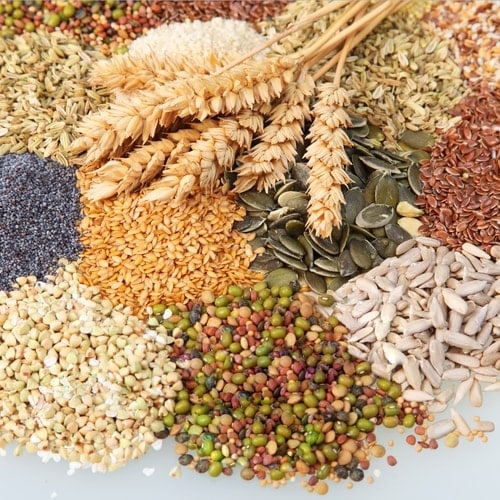For the past few months, I’ve focused on eating real food and getting plenty of color in my diet. Now that the month of May has arrived, let’s focus on getting the best grains possible. The US Dietary Guidelines recommend that whole grains should make up half of the grains you eat. My take – why just focus on half? The truth is, the vast benefits of whole grains should convince even the biggest white bread fan to make the switch. Here are some fun whole grain facts.
They Fight Against Cancer, Diabetes, Heart disease, and Constipation
Multiple studies show that more whole grains amount to less disease and obesity. This has a lot to do with both the inclusion of soluble and insoluble fiber, the impact that fiber has on gut health, and the fact that swapping refined grains for whole grains helps to better control blood sugar and inflammation. A 2014 study in the British Medical Journal found that heart attack patients that consumed more cereal fiber lived longer. Another study, published in The Journal of the American Medical Association found dietary fiber helps to reduce the risk of death from all causes.
High-Fiber Whole Grains Keep You Healthy as You Age
A 2016 study found that individuals who consumed more fiber-rich whole grains as they aged were less likely to develop age-related diseases. The authors of the study determined that consuming whole grains was tied to successful aging. Who doesn’t want that?
There’s Gluten-Free Whole Grain Options
Yes, you can still be gluten-free and fiber-rich. Gluten, the protein found in wheat, rye, and barley can be problematic for individuals with non-celiac gluten sensitivity and completely contraindicated in individuals with celiac disease. Whole grains that are void of gluten (and completely delicious) include brown rice, oats (look for certified gluten-free options), quinoa, amaranth, millet, and buckwheat. So, go ahead and stick with these grains and your gluten-free lifestyle!
You Can Still Be Low Carb and Eat Grains
Many individuals choose to start or stay on diets that are lower in carbohydrates to help manage disease or weight. Oftentimes, they feel they need to cut grains out completely. The key is not to cut but to upgrade to only intact options. Choosing more intact grains (which have more fiber and protein) is easy and involves omitting things like pasta and bread that are made with grains but then processed into a “product.” Instead, go for the whole unprocessed version instead. Intact grains include brown and wild rice, steel-cut oats, quinoa, buckwheat, and barley.
The Meadows Behavioral Healthcare family of programs realize that food choices affect the overall success of treatment. Many nutrients have connections with depression, anxiety, and addiction. Few treatment programs realize this connection and I am proud to be associated as a Senior Fellow of this organization.
Next month, I’ll be focusing on how your fuel can impact your mood! Spoiler alert – what you choose to eat, and not eat, may have a huge impact on your happiness.
Written by: Kristin Kirkpatrick, MS, RDN, Senior Fellow of Meadows Behavioral Healthcare

